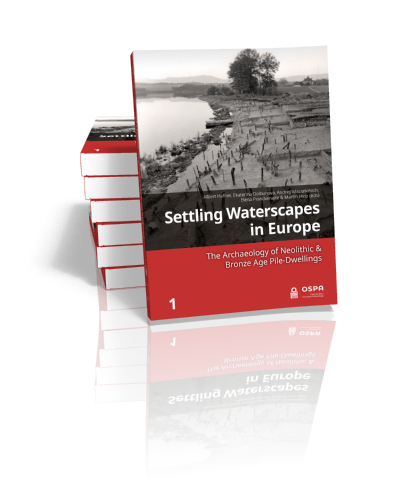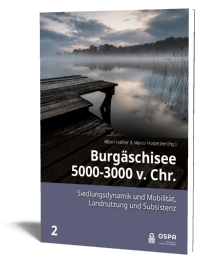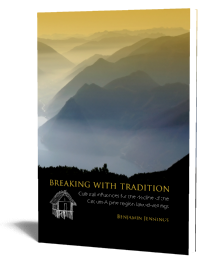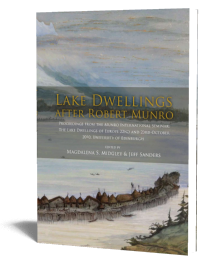Abstract:
Pile dwellings have been explored over a vast region for a number of decades now. This has led to the development of different ways, methods, and even schools of under-water and peat-bog excavation practices and data analysis techniques under the influence of different research traditions in individual countries. On the one hand, these and other factors can limit our understanding of the past, whilst on the other hand they can also open up further avenues of interpretation.
By collecting the papers presented at the 2016 session of the EAA in Vilnius, this book aims to take this diversity as an opportunity. The geographical scope extends from the Baltic to Russia, Belarus, Albania, North Macedonia, Bulgaria, Bosnia, Croatia, Greece, Germany, Austria and Switzerland to France.
The volume thus provides a current insight into international research into life in and around a vast array of prehistoric waterscapes.
Extensive multidisciplinary research carried out in recent years has provided new data with regard to the anthropogenic influence on the landscapes around Neolithic and Bronze Age pile dwellings, which allows us to characterise in more detail the lifestyles of the settlements’ inhabitants, the peculiarities of the ecological niche and the interaction between humans and their environment. The volume also contains various case studies that demonstrate the importance of scientific analyses for the study of settlements between land and water.
Overall, the volume presents an important new body of data and international perspectives on the settlement of European waterscapes.
Contents
1 Introduction
Albert Hafner, Martin Hinz, Andrey Mazurkevich, Ekaterina Dolbunova, Elena Pranckenaite
2 Archaeological excavations from the past with new interpretations
Maili Roio
3 Landscape, seasonality and natural resources use in the 3rd millennium BC by pile-dwelling communities (NW Russia)
Andrey N. Mazurkevich, Mikhail V. Sablin, Ekaterina V. Dolbunova, Piotr Kittel, Yolaine Maigrot, Eduard Kazakov
4 Geophysical prospection of submerged Neolithic settlements in Lake Sennitsa (NW Russia)
Andrey N. Mazurkevich, Sebastian Lorenz, Jörg Fassbinder, Roberto Hensel, Ekaterina V. Dolbunova, Eduard Kazakov, Elena Pavlovskaya
5 Pile dwellers in the Sukhona basin? Wooden structures of the 4th and 3rd millennium cal BC at Veksa, Northern Russia
Henny Piezonka, Nadezhda Nedomolkina, Vanessa Elberfeld, Karl-Uwe Heußner, Wiebke Kirleis, Sebastian Lorenz, Magdalena Wieckowska-Lüth
6 The settlements of the Kryvina peat bog region in the context of cultural changes of the 5th – 2nd millennium BC
Maxim Charniauski
7 Neolithic wetland and lakeside settlements in the Balkans
Goce Naumov
8 On the Edge: The Pile-field of the Neolithic Lakeside Settlement Anarghiri IXb (Amindeon, West-ern Macedonia, Greece) and the Non-Residential Wooden Structures on the Periphery of the Habitation
Tryfon S. Giagkoulis
9 A new look at late Neolithic plant economy from the site of Zürich-Parkhaus Opéra
Ferran Antolín, Christoph Brombacher, Marlu Kühn, Bigna L. Steiner, Niels Bleicher, Stefanie Jacomet
10 Archaeological and palaeoecological investigations at Burgäschisee (Swiss Plateau): new interdisciplinary insights in Neolithic settlement, land use and vegetation dynamics
Albert Hafner, Fabian Rey, Marco Hostettler, Julian Laabs, Matthias Bolliger, Christoph Brombacher, John Francuz, Erika Gobet, Simone Häberle, Philippe Rentzel, Marguerita Schäfer, Jörg Schibler, Othmar Wey, Willy Tinner
11 New perspectives on archaeological landscapes in the south-western German alpine foreland
Martin Mainberger, Tilman Baum, Renate Ebersbach, Philipp Gleich, Ralf Hesse, Angelika Kleinmann, Ursula Maier, Josef Merkt, Sebastian Million, Oliver Nelle, Elisabeth Stephan, Helmut Schlichtherle, Richard Vogt, Lucia Wick
12 From lakeshore to hilltop
Kerstin Kowarik, Julia Klammer, Helena Seidl da Fonseca, Jakob Maurer, Timothy Taylor
13 Defining pottery use and exploitation of natural products at Clairvaux XIV during the Middle Neolithic
Léa Drieu, Sigrid Mirabaud, Mélanie Roffet-Salque, Thierry Blasco, Pierre Pétrequin, Anne-Marie Pétrequin, Richard P. Evershed, Martine Regert

Prof. Dr.
Albert Hafner
Albert Hafner holds a full professorship in Prehistoric Archaeology and is member of the Oeschger Centre for Climate Change Research (OCCR) at the University of Bern, Switzerland. His research interests include Holocene human-environment relationships, social developments and elites, burial rites, underwater archaeology and alpine archaeology. Main ongoing research projects funded by the Swiss National Science Foundation and the European Research Council are related to lake-side settlements in the Alpine Space and the Balkans.
read more











